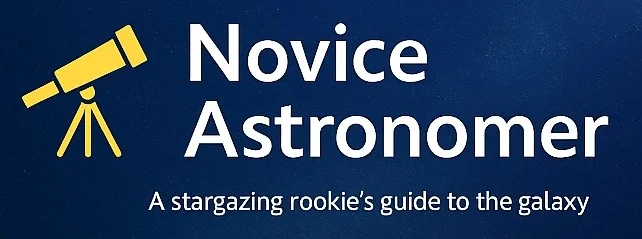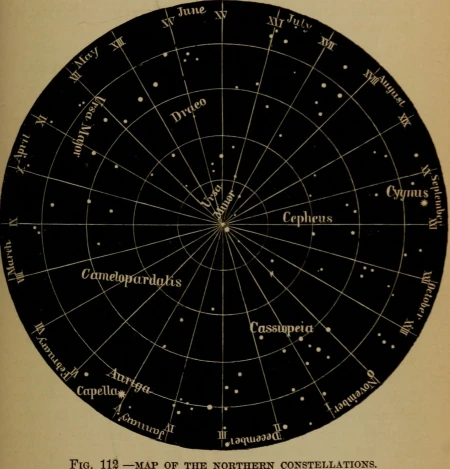It was a rainy, yucko day—the kind that makes you want to cancel everything. But I dragged myself to the Village Inn for one reason: Skip’s presentation.
The room? Leaking. Buckets, folding caution signs, and water dripping from ceiling tiles and light fixtures just behind us. It was slightly alarming—electrical fire, anyone? Fortunately, that didn’t happen. Except inside my brain as I tried to process Skip’s talk.
Between the ceiling leak, daylight glare, and what sounded like someone repeatedly drop-kicking a stack of dinnerware in the kitchen, it was not the most ideal setting for celestial revelations.
Despite the weather, a few familiar faces made it out. My new friends had saved me a seat—lefty-friendly and right next to Skip. Priorities.
🔭 Familiar Faces & Club News
Attendance was light (see: rainstorm), but the essentials got covered:
☄️ Meteor shower observation begins. Peak viewing is July 28–August 7, with dark sky windows every morning after midnight—though the Perseids’ max will be lost to the full moon.
🌕 July 26 may bring a sweet lineup of Regulus (in Leo), and the Moon.
🎨 And—major shoutout to Courtney, who designed two awesome new club logos: one for embroidery (like polos and hats), and one for t-shirts and other print gear. She tried to brush off the compliments with a casual “I just made it on the computer,” but we’re not letting her get away with that. We see you, Courtney.
🧠 Trying to Keep Up: Skip’s Tour of the Sky (and Time Itself)
Some of Skip’s slides were tough to see thanks to the window glare—which just made me extra grateful I’d been promised a copy.
Skip’s talk? Officially: pole stars and the precession of the equinoxes. Unofficially? A cosmic brain scramble.
Picture trying to juggle while balancing a broomstick on your nose… standing on a wet tile floor.
Apparently, this was a longer presentation Skip had condensed—which might explain why I was lost for, oh, 80% of it. Smart people have a tough job: trying to make expert subjects beginner-friendly. And precession? It’s not small potatoes.
Before Skip even got into the meat of the presentation, he dropped a quick astronomy 101 nugget:
If you’re looking down at a planet and see it spinning counterclockwise, you’re looking at its north pole.
Simple enough—makes sense, easy rule of thumb. But then—exceptions!
Seems Uranus and Venus are a couple of rule-breakers. Uranus lies nearly flat on its side, and Venus spins backwards. Like… what? But why?? And how???
Oh—and Venus spins so slowly, its day is longer than its year. Just in case you thought it couldn’t get weirder.
But there was no time to ponder because Skip was off and running. What followed was a fast-paced journey through thousands of years of sky-watching—tilt, wobble, stars, circles, time loops, coins-as-measuring-tools…
It didn’t all click right away, but after revisiting the slides and doing a little homework, here’s what I’ve worked out.
Obliquity & Axial Tilt
Earth doesn’t just spin—it tilts and wobbles, each in its own way.
- The tilt angle (called obliquity) shifts slowly over a 41,000-year cycle.
- The direction that the tilt points (precession) wobbles around in a circle over a 26,000-year cycle.
One affects how intense the seasons are; the other affects which star is our North Star. Earth is basically a giant, slightly tipsy gyroscope.
Currently, Earth is tilted at 23.4°, partway through its 41,000-year swing between 21.1° and 24.5°. We’ve been on the downward slope of that cycle for about 9,000 years, and it’ll keep decreasing a while longer before turning around again. This shifting tilt messes with more than just seasonal vibes—it gradually shifts the tropics and polar circles, too.
Speaking of which:
You know how we call them the Tropic of Cancer and Tropic of Capricorn?
Yeah… about that.
Those names made sense 2,000+ years ago, when the Sun was in Cancer during the summer solstice and in Capricorn during the winter one. But thanks to precession, that’s changed.
Today, the solstice Sun is in Taurus and Sagittarius, respectively. So technically, we should be calling them the Tropic of Taurus and the Tropic of Sagittarius.
(But don’t worry—they’re not reprinting all the maps.)
According to John Milton, Earth’s tilt was a divine punishment: in Paradise Lost, angels shove the planet off its axis to make the seasons harsher after the fall of man.
How poetic. And inaccurate. In reality, Earth’s tilt is a good thing—without it, we wouldn’t have seasons at all, and the planet would be way less habitable. Tilt gives us weather variety, not vengeance.
Skip also explained how that tilt affects what we see in the sky. Earth orbits the Sun on a flat surface called the ecliptic plane, but because of our axial tilt, the Sun appears to drift above and below the celestial equator throughout the year.
That’s what gives us solstices, equinoxes, and seasons.
TL;DR: Earth’s lean + orbit = everything seasonal we know.
Degrees & Sky Geometry
Skip threw in some celestial math, reminding us just how vast the sky is: about 41,253 square degrees. He also tossed in a few distance tricks using coins. For example, you can block the Moon with a dime held exactly 6’ 9” from your face.
But unless you’ve got really long arms, you’re gonna need a friend for that.
He also explained terms like apogee (when the Moon is farthest from Earth) and perigee (when it’s closest). Same idea for Earth and the Sun—aphelion and perihelion.
And “Mean Moon” and “Mean Sun”? Not insults. They’re the average distances used when estimating apparent size.
Skip had a lot of fun using the Moon as a measuring stick. The outer edge of the Big Dipper is 10 moons long. From the tip to Polaris is 30 moons. And apparently it would take 200 liquefied moons to fill the bowl of the Big Dipper. Who even comes up with this stuff?
Turns out both the Moon and the Sun are about half a degree wide in the sky, which is why eclipses work so perfectly. It’s one of those cosmic coincidences that makes Earth feel like it’s just showing off.
Magnitude
Polaris might be famous, but in terms of magnitude—the scale astronomers use to measure star brightness—it’s only a 2.0. That’s visible, sure, but not exactly dazzling.
Brightness is measured relative to Vega, a reference star (and former/future pole star!) set to magnitude 0. The lower the number, the brighter the object.
Really bright stars, like Sirius, even go into the negatives—Sirius is around –1, making it the brightest star in the night sky.
So yeah, Polaris is more “reliable friend” than “spotlight.”
Constellations
We took a quick detour through the history of constellations—how different cultures mapped the sky, how stars showed up in flags, and how today’s official list was finalized.
In 1922, the International Astronomical Union established the 88 modern constellations. Then in 1928, they officially outlined the boundaries based on what the sky looked like in 1875 (because that’s what astronomer Benjamin Gould used in his star catalog).
Skip also showed us some older star charts and a few wonderfully weird artistic takes on the night sky.
Pole Stars
Earth’s axis doesn’t point in a fixed direction forever—that’s where pole stars come in. These are the stars that happen to sit closest to our celestial poles at any given moment during Earth’s 26,000-year precession cycle.
Right now, the North Star is Polaris, but it’s just holding the title for a while. Around 2700 BC, Thuban (in Draco) filled that role; and in about 12,000 years, Vega will take its place.
The South Pole doesn’t currently have a great option—Sigma Octantis is technically closest, but it’s faint and not much use for navigation.
Future stargazers, though, will have it easy. In 66,270 AD, Sirius—the brightest star in the night sky—will hover just 1.6° from the South Celestial Pole. Lucky ducks.
Precession
Precession is the slow, top-like wobble of Earth’s axis. Picture a spinning toy top as it starts to slow down—it begins tracing a little circle at the tip. That’s what Earth’s axis is doing, just on a 26,000-year timescale.
As the axis wobbles, the direction it points in space shifts. The result? The celestial poles slowly trace circles through the sky, and the constellations tied to our seasons gradually shift.
In about 13,000 years, for example, Orion will be a summer constellation. Kind of makes your calendar feel flimsy, doesn’t it?
And just like with Earth’s rotation, precession is counterclockwise if viewed from above the North Pole. The South Pole traces its own matching circle—in the opposite direction. So over time, the entire sky appears to slowly wobble around us like a giant, cosmic Spirograph.
Other Worlds
Skip wrapped up by showing how other planets in our solar system have their own axes, and therefore their own versions of north and south celestial poles—and their own potential pole stars.
It was a cool reminder that everything we’d just learned about Earth’s tilt and wobble also applies across the solar system… even if those other planets don’t always follow the rules (looking at you, Venus and Uranus).
🌌 What I’m Learning (Besides Science)
Sometimes, just being there is the win. Learning astronomy isn’t about understanding everything right away—it’s about showing up, staying curious, and laughing through the overwhelm. Bonus points if you don’t get electrocuted by a leaky ceiling.
The good news? Paul’s planning to have Skip present this talk again at a future meeting, hopefully with better weather, better visibility, and fewer flying plates. I’m genuinely looking forward to round two—maybe next time, I’ll actually keep up.
For now, I’m just grateful for the learning, the laughter, and the (slightly soggy) sense of community.

